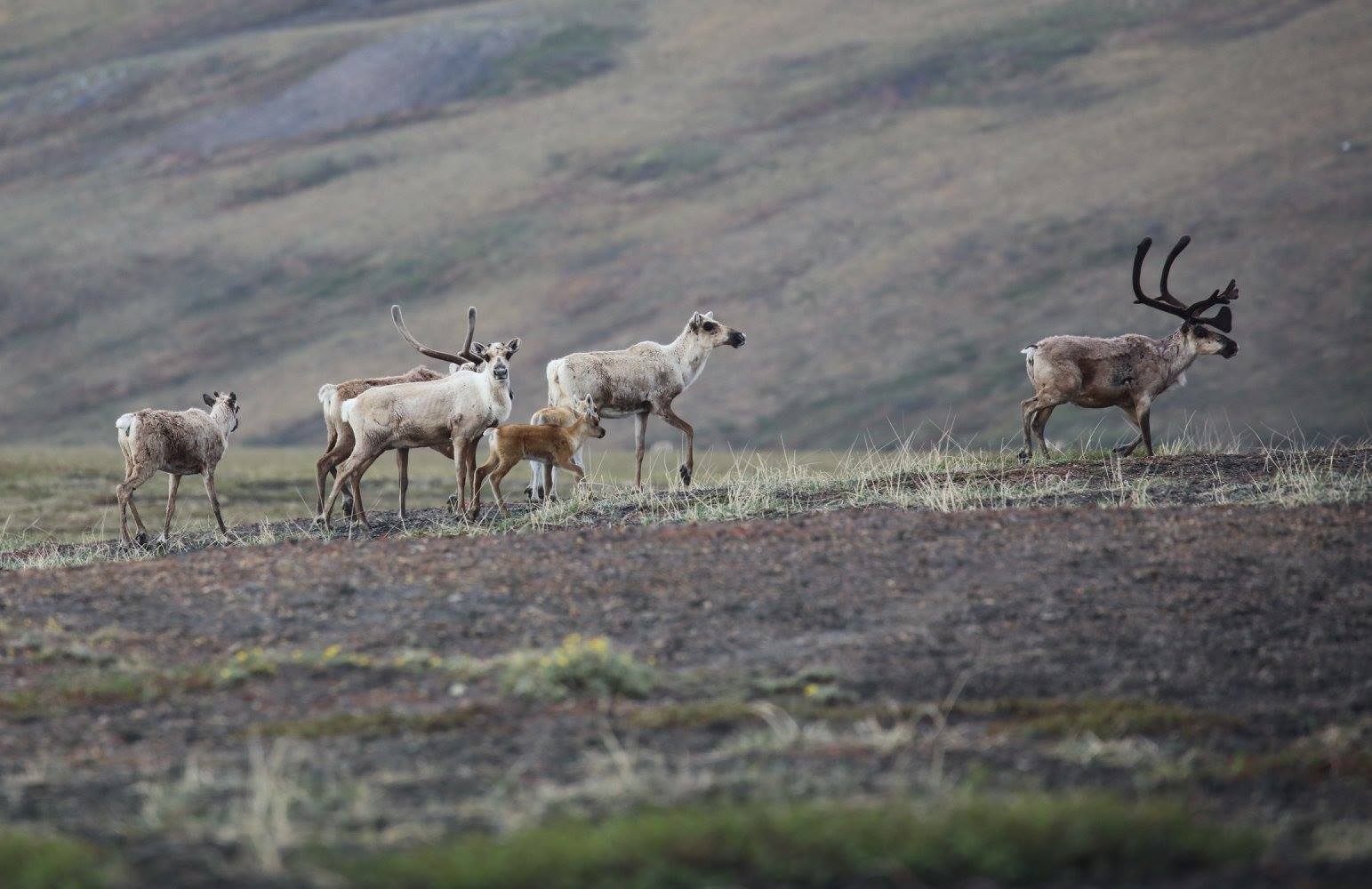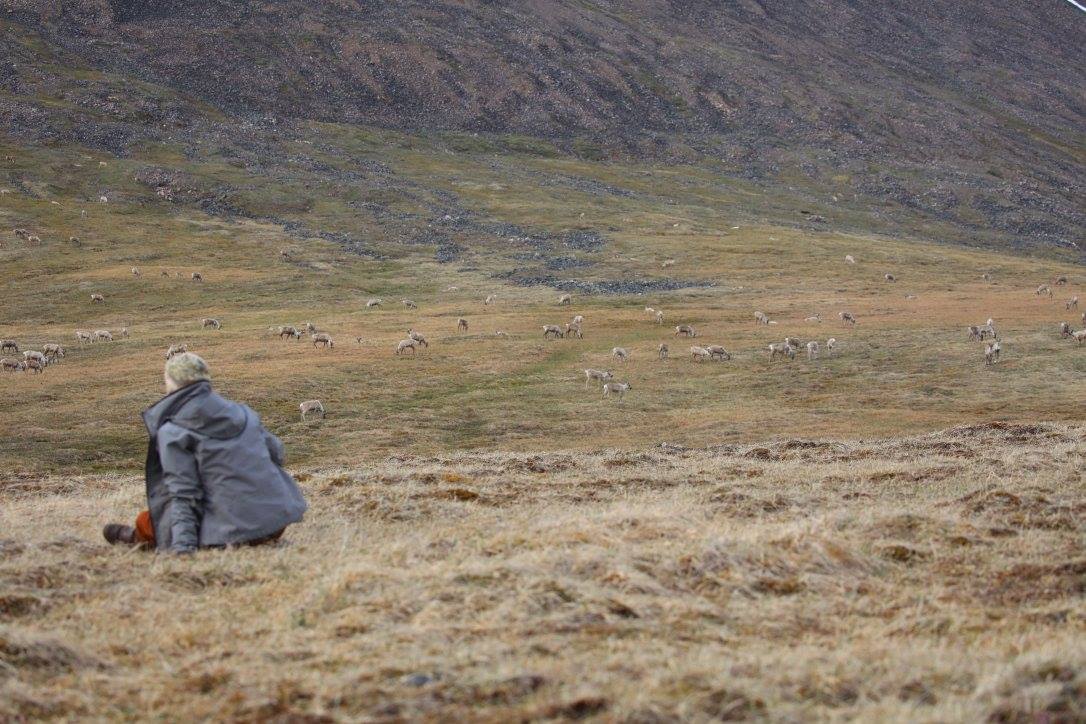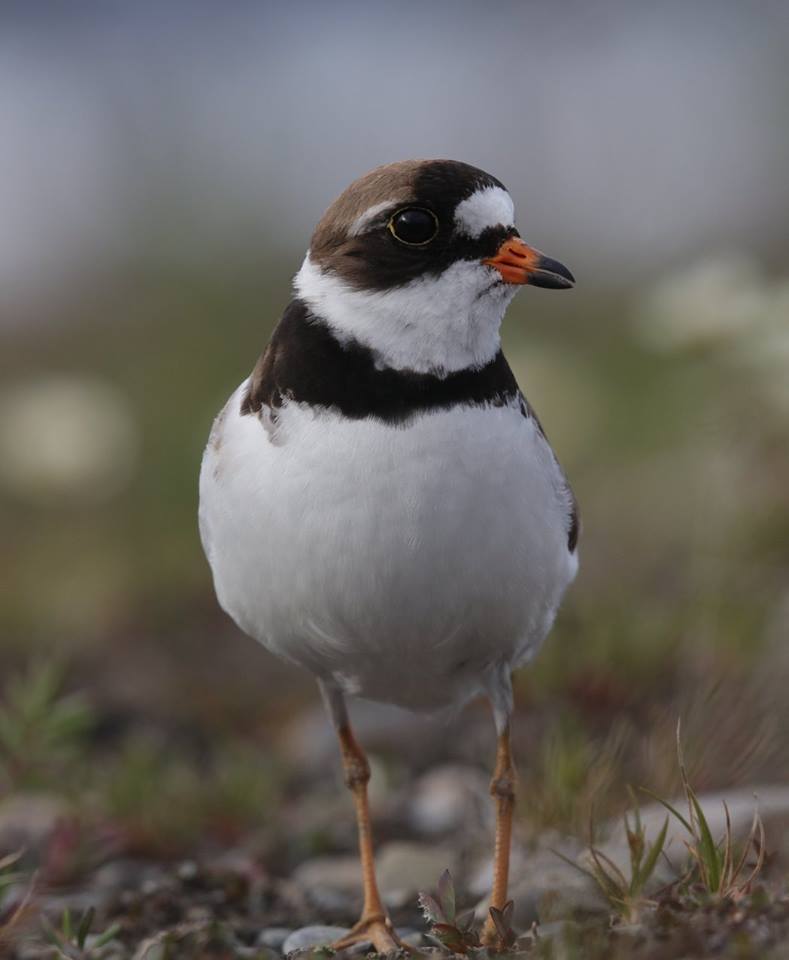Seeing the Arctic through fresh eyes on a caribou-filled solstice in Alaska’s Brooks Range

In a small plane above the Arctic tundra, my thoughts about home vanished. Below, orange strands of river braided over gravel bars to join milk white, jade green and glacial blue streams. The surrounding tundra appeared soft and green.
The pilot came over the radio. A grizzly bear lumbered along the shoreline below. As my neck strained to see the bear under the wing, I struggled to grasp the immensity of his range and life.
All I could do was gawk as if the plane’s window were glass at the zoo. I wanted to understand where the bear was going and why. Where had it been? What had it eaten for breakfast?
We were called eco-tourists on this trip. But it didn’t matter whether we were offseason hunters wearing camouflage because that’s what we had for cold-weather gear or another kind of ambassador. We were there to get to know the place better because we fell in love with it when I hunted caribou on the north side of the Brooks Range for the first time in 2015.
Back then, my beginner’s mind focused narrowly on the particulars of the hunt. The one distraction I remember was when wolves howled as my partner and I field-dressed the caribou. The entire hunt concluded in three days, but a wild mystery haunted me. I knew we’d be back to take a wider, deeper view.
Viewing the coastal plains on Google Earth wasn’t enough. I’d done that. The view from the Super Cub gave us a closer look, but I wanted more. Not to have an encounter with the bear but to have an encounter with his place.
We landed at a hunting lodge on the night of summer solstice. The light on the melting ice and tundra dazzled. The charm of the rustic outbuildings set on a rise near a river in immense country made it impossible to sleep. I snuck out to the porch throughout the night to watch the glow of sun on the hills.
En route to a tent camp the next day, we flew in two Super Cubs over segments of the Porcupine Caribou Herd. My mind tried to take in the spectacle of what we saw — the caribou migration across the coastal plain of the Arctic National Wildlife Refuge.
Tens of thousands of full-grown caribou along with countless calves dotted the Brooks Range slopes. It was hard not to wonder how many caribou we saw in our hourlong flight.
“I’ll bet it’s 9,000,” said the pilot.
Individual animals moved in a line across the last remaining snow. They swam across streams as red calves followed in a panic to stay with the herd. They lay like cows on the tundra or picked up their heads and lifted to standing position from their knees as we passed overhead.
A grizzly bear we had seen eating a caribou calf earlier in the day was now bedded down in unfurled earth 20 yards from a small group of caribou. The caribou did not appear nervous about the bear as they ate. Maybe they had an agreement, I thought. Although, I imagined the closest caribou keeping an eye on the bear from under its brow tines.
Farther off, a lone white wolf following the herd stopped to look at us.

Once on the ground, we followed a caribou trail through a tangle of low willows and brush. We were grateful for the trail system. I remembered, back at home on the Kenai Peninsula, what had started as game paths into the mountains later became hunting routes and finally popular hiking trails.
When we reached the bench, my friend pointed to an abundance of fossilized coral. Each rock appeared covered by stone sea creatures. The thought that the top of a mountain was once the bottom of an ocean made me feel small in space and time.
As we walked back, I noticed miniature flowers at my feet. Petite alpine forget-me-nots mixed in with lavender moss campion. There were dwarf bouquets of purple and blue flowers, dime-sized white flowers with yellow and pink centers, and delicate yellow Arctic poppies.
It rained intermittently at our camp, and five of us spent the rainy moments inside the tent. There we shared stories and information — what we had learned from biologists, photographers and guides along with our own hunting stories.
We were all there because we found the place as hunters and now shared secret hunting and pike fishing spots in a whisper despite no one being within 80 miles. A friend known for his good luck in hunting gave us tips on how to pack a comfortable moose camp.
“I pack two totes,” he said. “That’s our table for crib.” I listened to the list of items that included cots, square sleeping bags, and a two-burner propane stove. It made me question my focus on lightweight backpacking gear in situations where I didn’t need to pack camp.
“If you got the time to sit in a chair, you’ll kill a big moose,” he said.
Maybe I had it all wrong.
With the wealth of information available on the internet, it’s difficult to argue the need to spend time with people and in places. But there is value in “face time” despite the advent of FaceTime. It’s when we gain an intimacy with the places we hunt that they become special places. I’d have never known about the incredible beauty of the far north if it weren’t for the opportunity to hunt there.

Some people describe the Arctic as a wasteland, but nothing could be further from the truth. We saw bees nearly as big as hummingbirds, ground squirrels running with rod-straight tails, a plover playing wounded to distract us from her nest of four eggs about the same size as the peregrine falcon’s eggs hidden on the cliff above camp.
As I sat on the aufeis, I thought about what drew me there and how I would make it back again. There is tremendous value for those of us who hunt in getting to know more about the game we pursue as well as the entire landscape they inhabit and how they interrelate with other animals, birds, plants and waterways.
Hunting isn’t just an adrenaline-fueled stalk and shoot at an animal. Just as a summit is not the whole of the mountain, hunting includes the aimless wandering and observations, the year-round scouting and making ready, the work and rest involved as well as coming together with friends in the Arctic to relax and enjoy one of the last wild places on earth.
Christine Cunningham is a lifelong Alaskan and avid hunter. On alternate weeks, she writes about Alaska hunting. Contact Christine at [email protected].